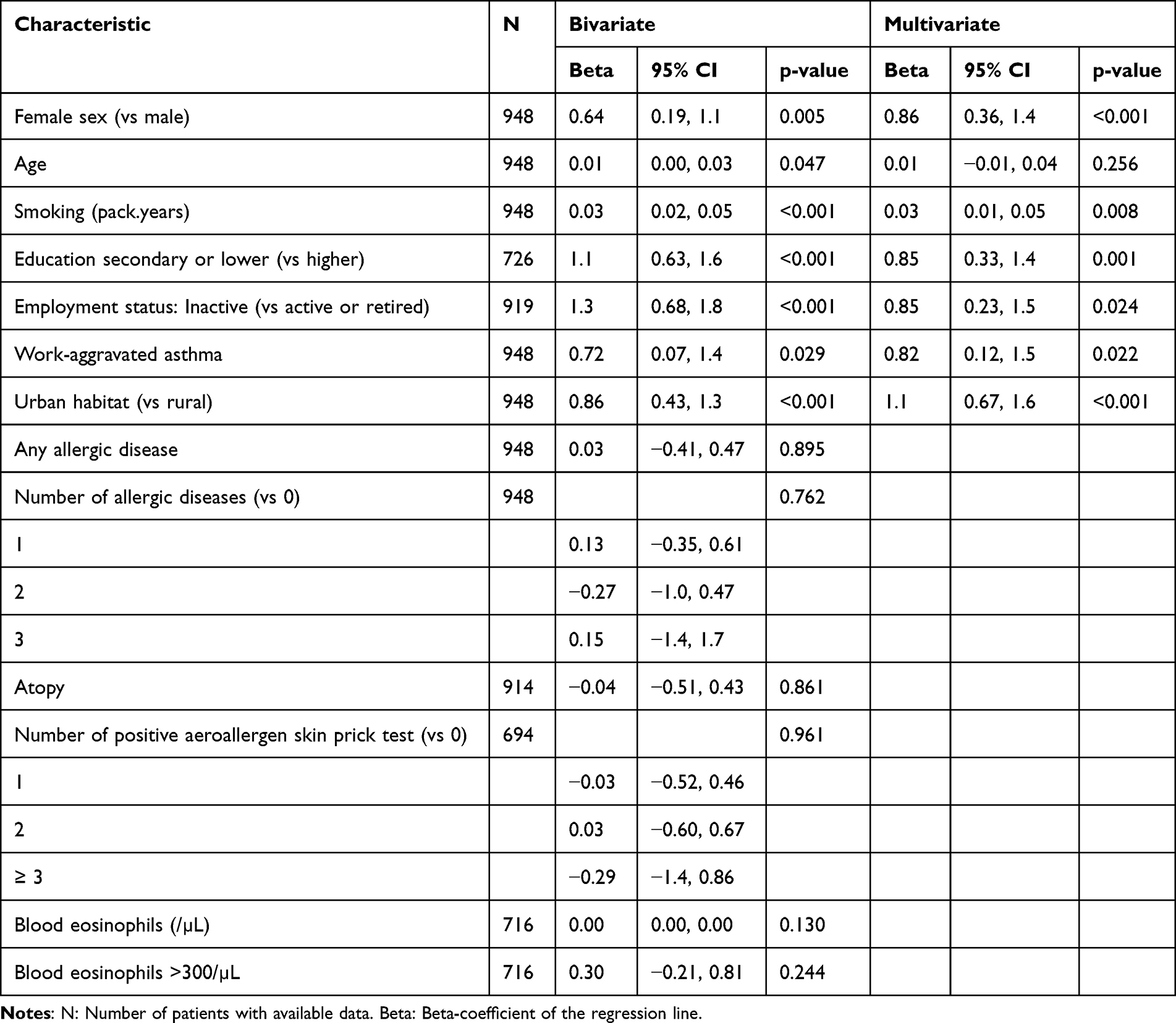
Chevereau-Choquet M, Thoreau B, Taillé C, Marchand-Adam S, Morel H, Plantier L, Portel L. J Asthma Allergy. 2024;17:69-79
Purpose: Severe asthma affects 5 to 10% of asthmatics and accounts for a large part of asthma-related morbidity and costs. The determinants of asthma severity are poorly understood. We tested the hypothesis that asthma severity was associated with 1) atopy and allergy and 2) markers associated with environmental exposure.
Patients and Methods: Data from the FASE-CPHG study, a cross-sectional, observational, multicenter investigation, were analyzed to identify markers associated with asthma severity. Asthma severity was gauged using the ASSESS score, encompassing symptom control, exacerbations, FEV1 and therapeutic load. Bivariate and multivariate analyses were used to identify patient characteristics associated with the ASSESS score.

Results: The analysis involved 948 patients, with 592 women, of which 447 patients (47%) had severe asthma. Among these, 491 patients (52%) had at least one positive aeroallergen skin prick test and 525 (55%) had at least one allergic disease among atopic dermatitis, chronic rhinitis and food allergy. The mean±SD ASSESS score was 11.2± 3.4. Characteristics associated with a higher ASSESS score were female sex, secondary or lower education, unemployed occupational status, smoking, work-aggravated asthma and urban housing. There was no association between the ASSESS score and allergic diseases, aeroallergen-specific skin prick tests and IgEs, or blood eosinophil counts.
Conclusion: While atopy and allergy were frequent among asthmatics, neither was associated with asthma severity. Modifiable environmental factors such as smoking, urban housing and work-aggravated asthma were independently associated with asthma severity.
